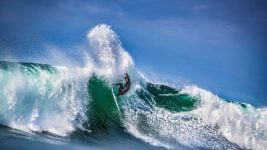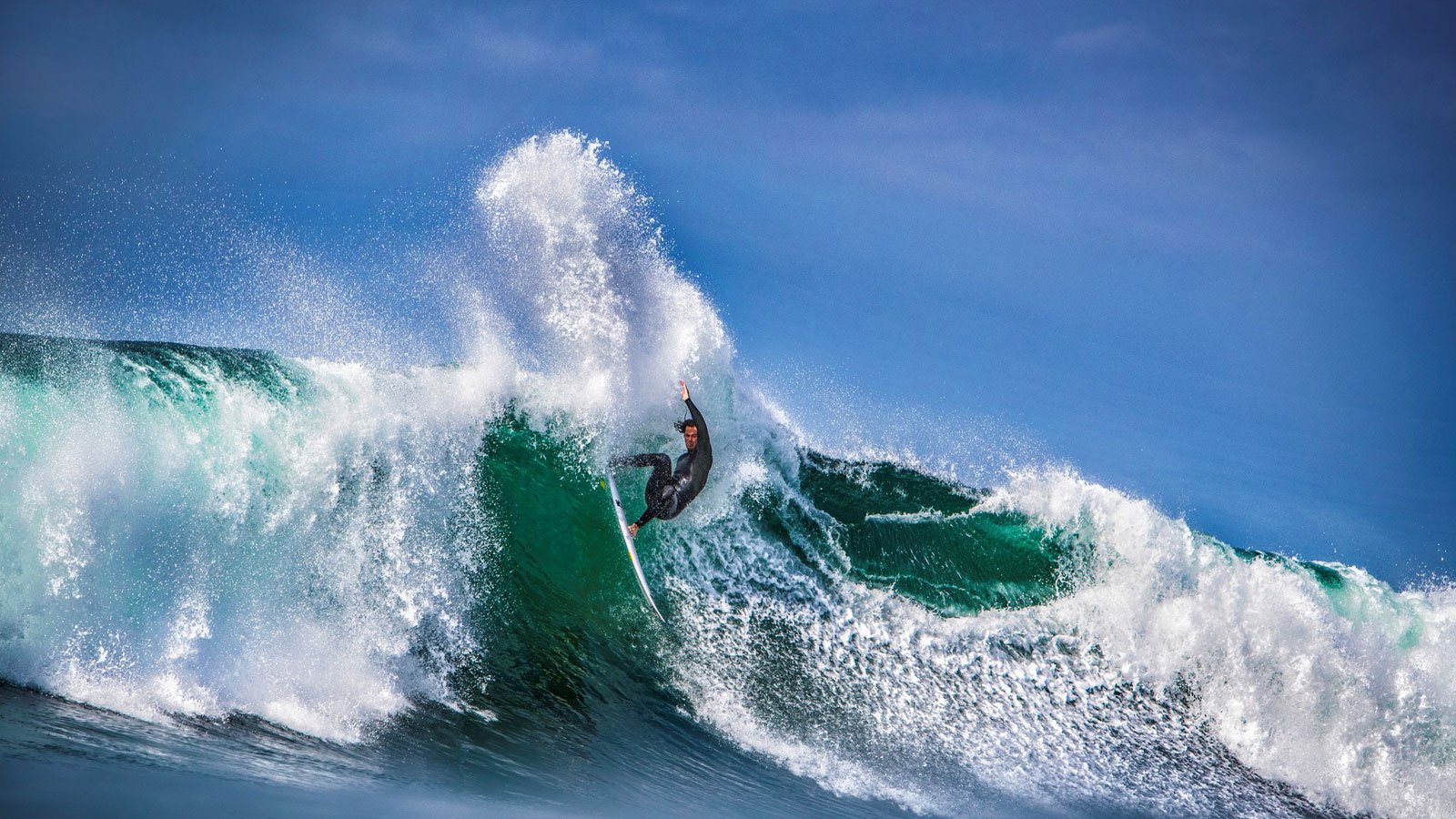Wetsuits FW20/21
Obsessed by ecological concerns and ruffled by the arrival of new pure players, the neoprene sector is undergoing a profound change that is revitalising the market. These factors have crystallised around the most technical product in the category: the winter wetsuit. Check out the brands’ responses in this very chilly Buyer’s Guide written in mittens by David Bianic. Brr…
Helped along by unprecedented mediatisation of “exotic” surf trips to cold water, winter surfing is no longer seen as an ordeal to put yourself through, but more like a new “cool” side to surfing. The proof is how we talk about cold water surfing in the same way as we talk about big wave surfing: it has become a genre. Yes but a genre very much associated with the most committed fringes of hardcore surfers. Cliché or undeniable fact? We asked the brands what their winter wetsuit customers are looking like and for Mathieu Desaphie, Founder of the small French brand Sen No Sen, cold water surfing “affects the whole surfing population because nowadays you can see surf schools working during winter with very motivated beginners happy to enjoy cold water sessions.” And if this is the case, the reason behind it is linked in a big way to improvements that the entry-level wetsuit models have benefitted from, reckons John Westlake from Alder. His British compatriot from C-Skins, Mark Brown, confirms this remarkable growth in entry-level wetsuits in northern Europe, “where it is cold all year round”. But make sure you put this rise to the ‘beginner’ market into perspective as purchases made by the “core” clientele in the winter are much greater proportionally as confirmed by Julien Durant, Director of Picture Organic Clothing: “Today, wetsuit sales for very cold weather are truly dedicated to a market of sharp and diligent surfers who live the practice.” Their best winter sales are carried out on the most technical models, a trend also shared at Xcel: “Core surfers are not influenced by marketing, colours, fashion, or team riders. In this group, product is everything!” assures Design Director Lance Varon. He also really neatly sums up the requirements of these hardy surfers who: “don’t let the environment affect their commitment.” These results have also been levered by the success of neoprene accessories like the Solite thermo-mouldable booties: “Our 8mm Fire was a huge hit this year even at USD$109.95. So we are going to expand our offer in the super-cold-water range with a lower-priced 8mm Custom (USD $89.95),” reveals Adrian Kippling, Commercial/Marketing Manager Europe.
Here come the disruptors
O’Neill Wetsuits Product Manager Tom Copsey shares this view and because these small brands are manufactured in the same factories as the big brands and benefit from all their expertise, it makes it hard to offer an original product, unless you are like O’Neill who use their own R&D factory and dedicated team of engineers for their wetsuits.
Ranges: from the most simple to most complex
These new players on the wetsuit market – small independent brands selling directly – have drawn a segment of the surfing population away from the big brands by their pricing, their ‘indy’ added-value as well as their easy to read, often singular ranges. Contrary to this, brands known as ‘endemic’ brands are rolling out much more rich, complex ranges that are testament to their expertise but that can also cause some potential confusion for the customer. As many as seven ranges from Quiksilver, six at Gul, Alder and Soöruz, four for Rip Curl, Excel and ION, three (C-Skins, Hurley, MDNS, O’Neill) or two collections (Dakine, Onda, Picture, Sen No Sen), or one single one at Patagonia. Some of these collections are then divided into sub-ranges… a real mindbender! The bigger the range, the higher quality the communication has to be, firstly from the brands themselves and then from the retailer, hence the importance of their training.
Innovation: ”Marginal Gains”
The echo of eco
Like the reverberation of an echo, the environmental approach is spreading throughout the neoprene sector. Limestone neoprene is expanding amongst brands and while this raw material is more eco-friendly than traditional rubbers from the petrochemical industry, it doesn’t warrant a sustainable label. This also counts as a non-renewable fossil fuel and the extraction/transformation processes are extremely energy intensive.
“Hey, we get it. Wetsuits aren’t the most sustainable products on this planet,” admits Jorn Thoes, Marketing Manager at Mystic, as the brand incorporates Yamamoto limestone neoprene into its High Range wetsuits (“for those rubber geeks out there, it’s the #39”), which “waste energy is used to power local eel farms”. But let’s not stigmatise the first steps that brands are taking towards more environmentally friendly wetsuits. “There is a long road ahead in making a truly sustainable wetsuit and no-one is there yet”, asserts Mark from C-Skins whose 100% of models are now made of limestone with carbon black additive (from recycled tyres). It’s the same recipe at Picture (EicoPrene) and Hurley whose entire range is also limestone + carbon black. At Onda it’s the Pro Series Ace that inherits limestone neoprene while O’Neill remind us that the use of limestone dates back to 1998 with them. Quiksilver, Dakine, Sen No Sen, Soöruz and Xcel are also offering limestone within their ranges. All undergo the dying procedure called dope-dyed for its reduction in water consumption and reduced CO2 emissions, and the same goes for the glues they use, which are water based and therefore solvent-free.
As for the use of Yulex neoprene, a rubber made from responsibly sourced hevea sap, Gabe Davies from Patagonia says regretfully that “I still don’t see any large-scale uptake”, nothing more than a Fair Trade certificate. But there are a few who have taken a punt on Yulex such as Sen No Sen and Gul, one of the oldest brands on the market (1967): “We will launch our first Yulex suit in September (2020)”, reveals James Richards (Graphic Designer) and Jack Knowles (Commercial Director) about their Recore collection before adding that from this date on, all the brand’s packaging will be biodegradable. MDNS are also going for this hevea latex on their premium PURE range, models that are lined with recycled fleece: “this construction means we need less thickness for the same warmth”, assures Brand Manager Benoît.
One brand is showcasing an original alternative: Soöruz and their Biöprene. This new neoprene will be on the shelves in summer 2020 within the Green Line collection. “It uses calcium from oyster shells to replace the limestone and we mix it with hevea, sugar cane and seeds…This new undertaking is USDA certified”, explains CEO Yann Dalibot. The icing on the cake is a price tag under €300.















